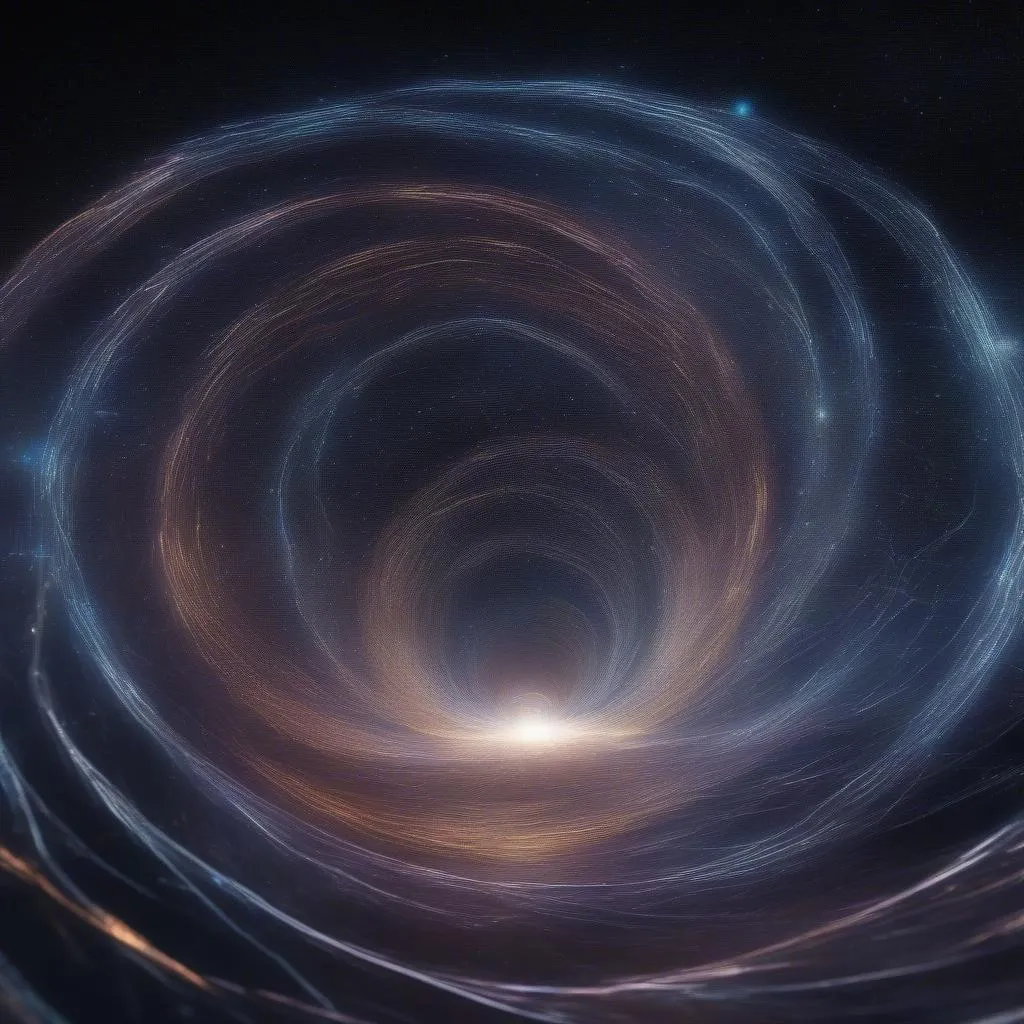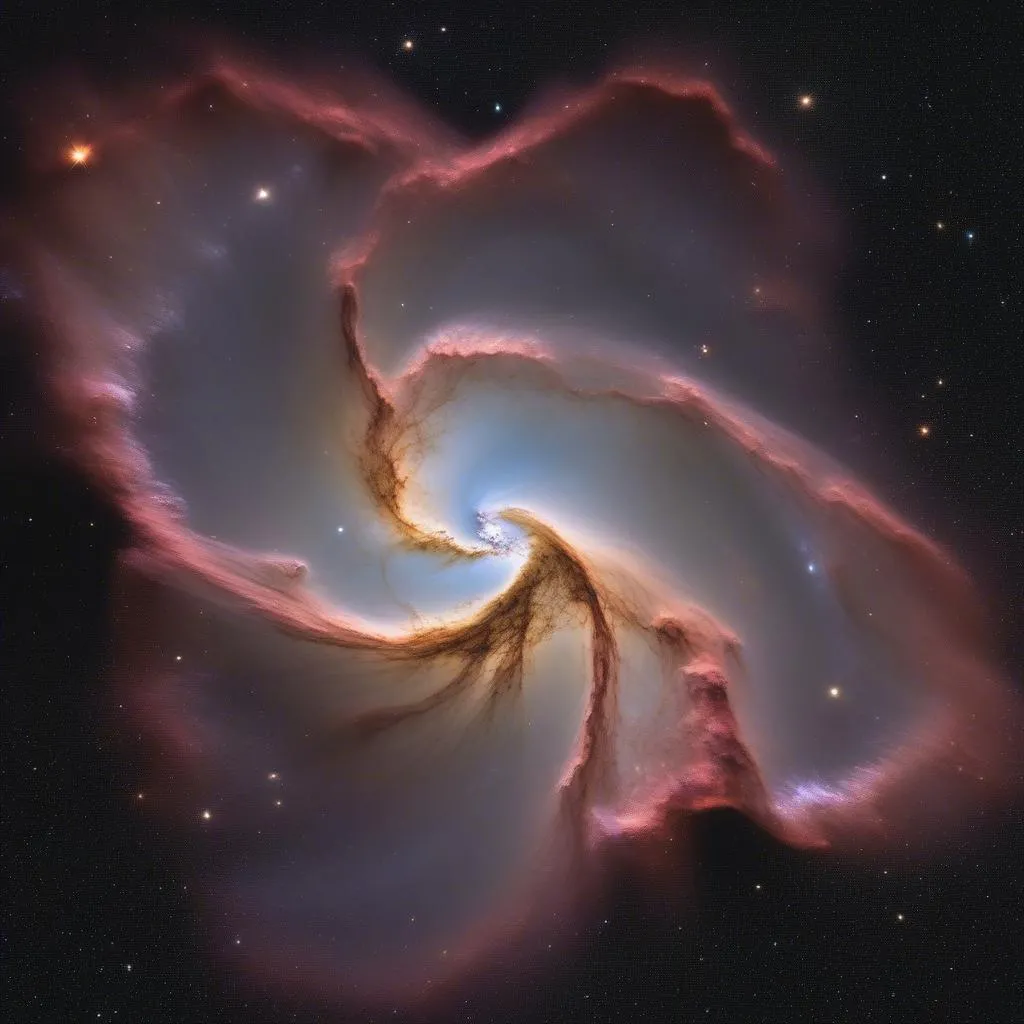“The surest way to make your dreams come true is to wake up.” – Paul Valery. This quote, often recited by my grandfather before embarking on cross-country road trips, always makes me ponder the limitations and possibilities of travel. While driving from New York City to the breathtaking Yosemite National Park is an adventure, what about traversing the cosmos? Will we ever be able to visit distant galaxies like tourists hopping on a plane to Rome? Specifically, Will Light Speed Travel Ever Be Possible?
Unpacking the Cosmic Speed Limit
The concept of light speed travel has captivated humanity for decades, fueled by science fiction and our innate desire to explore the unknown. But the reality, like the vastness of space itself, is much more complex.
The speed of light, approximately 299,792,458 meters per second, isn’t just a number; it’s a fundamental law of physics. According to Einstein’s theory of relativity, as an object approaches the speed of light, its mass increases infinitely, making it impossible to reach that speed. It’s like trying to reach the horizon, no matter how far you drive, it always seems just out of reach.
Obstacles on the Path to Light Speed
Numerous challenges stand between us and light speed travel, some theoretical, others technological:
- Energy Requirements: Accelerating even a small spacecraft to near-light speed would require an astronomical amount of energy, far exceeding our current capabilities.
- Time Dilation: One of the mind-bending consequences of relativity is time dilation. Time slows down for objects traveling at high speeds relative to stationary observers. This means a trip to a distant star at near light speed might seem instantaneous to the travelers, but years, decades, or even centuries could pass on Earth. Imagine returning from your cosmic voyage to find your hometown a completely different place!
- Navigation at Light Speed: Traveling at the speed of light would require instantaneous communication and reaction times to avoid collisions with even microscopic particles in space.
The Allure of Wormholes and Warp Drives
Despite the hurdles, scientists continue to explore theoretical possibilities for faster-than-light travel:
- Wormholes: Imagine folding a piece of paper so two distant points touch. Wormholes are like tunnels through spacetime, theoretically connecting distant points in the universe. However, their existence remains purely hypothetical.
- Warp Drives: This concept involves compressing spacetime in front of a spacecraft and expanding it behind, allowing it to ride a “wave” through spacetime. Think of it like surfing the fabric of the cosmos. While theoretically possible, the energy requirements for warp drive technology are currently beyond our reach.
 Wormhole in Spacetime
Wormhole in Spacetime
So, Is Light Speed Travel Possible?
The honest answer is, we don’t know yet. While current physics suggests it’s impossible to reach the speed of light, our understanding of the universe is constantly evolving. Just as humans once believed the Earth was flat, our current limitations may one day be overcome by future discoveries.
Embracing the Journey, Even Without Light Speed
While light speed travel remains a distant dream, it shouldn’t deter us from exploring the wonders of the universe at our own pace. There’s still so much to discover in our own solar system, from the towering Olympus Mons on Mars to the icy geysers of Saturn’s moon Enceladus.
Even if we can’t physically reach distant galaxies, technology allows us to explore them virtually. Telescopes like the James Webb Space Telescope provide breathtaking images of the cosmos, revealing the beauty and mystery of the universe we inhabit.
 James Webb Telescope Viewing Deep Space
James Webb Telescope Viewing Deep Space
FAQs About Light Speed Travel
Q: If we could travel at the speed of light, how long would it take to reach the nearest star system, Alpha Centauri?
A: Alpha Centauri is approximately 4.37 light-years away. This means, even at the speed of light, it would take over four years to reach.
Q: What are the implications of time dilation for space travel?
A: Time dilation could have profound implications for long-duration space travel. Astronauts returning from a mission at relativistic speeds could find themselves years or even decades younger than their counterparts on Earth.
Q: Are there any ongoing experiments related to faster-than-light travel?
A: While there are no experiments currently underway that could directly lead to faster-than-light travel, scientists are conducting research on topics like wormholes and warp drives.
Conclusion: Our Quest to Explore the Cosmos
The possibility of light speed travel remains a tantalizing enigma, pushing the boundaries of our scientific understanding. While the challenges are immense, so is the human spirit of curiosity and exploration. Even if we never reach the cosmic speed limit, the pursuit of this dream will undoubtedly lead to new discoveries and advancements that benefit humanity in countless ways. Remember, the journey of a thousand light-years begins with a single step, and every new discovery brings us closer to understanding the vast and mysterious universe we call home.
For more fascinating insights into the world of travel and exploration, visit travelcar.edu.vn. You can also explore related topics like “Are people permitted to travel independently in China?” and “A paragraph about time travel” on our website.